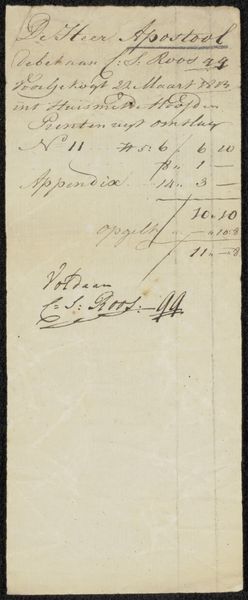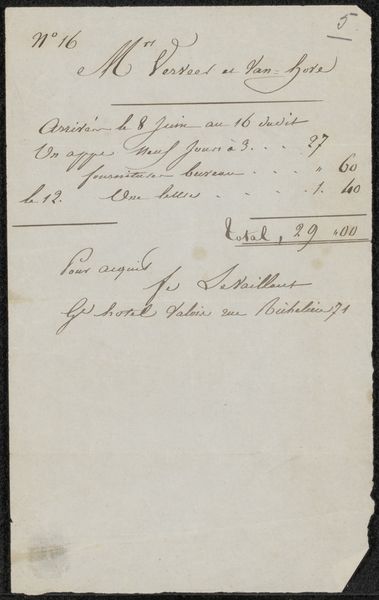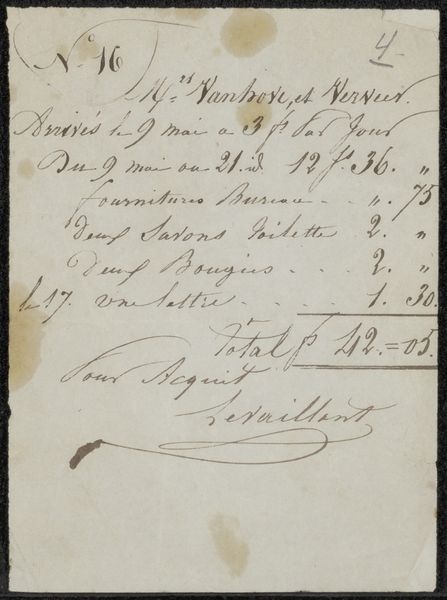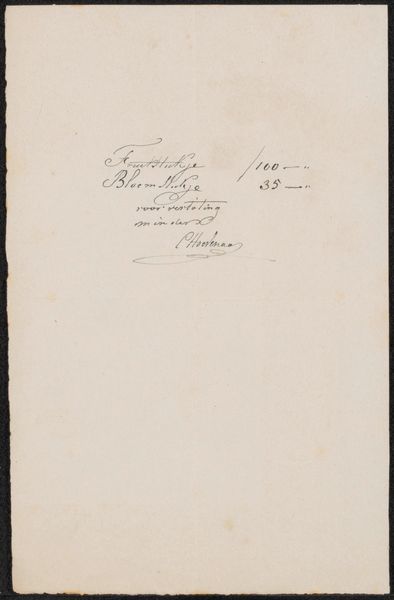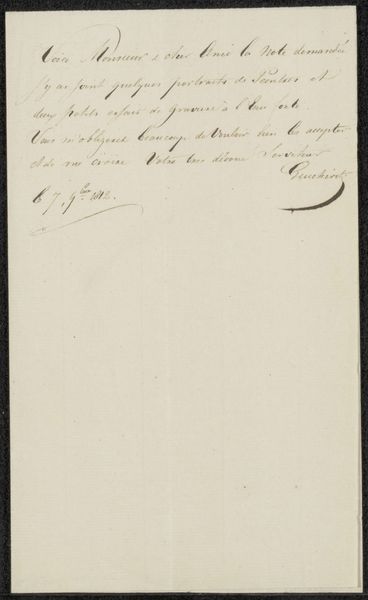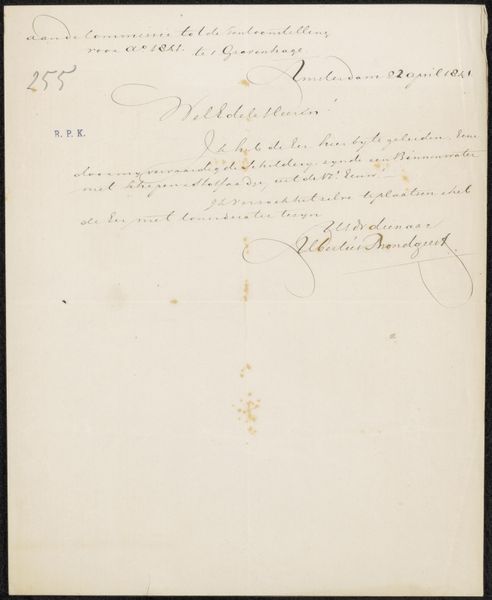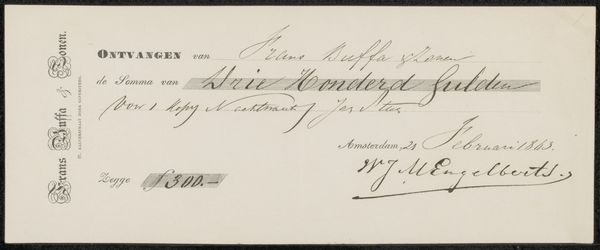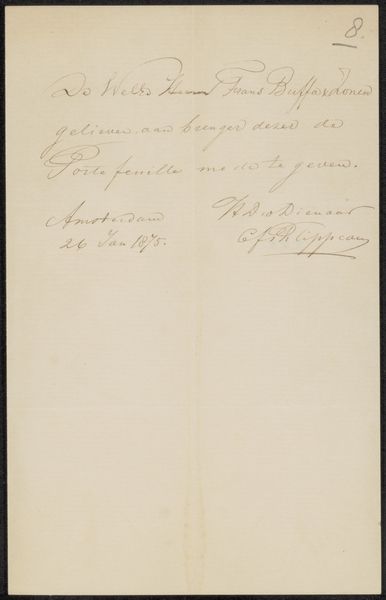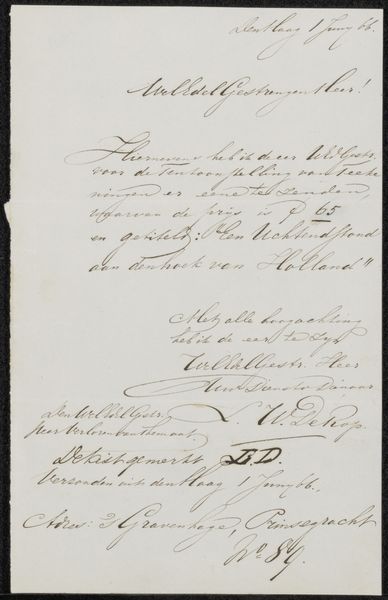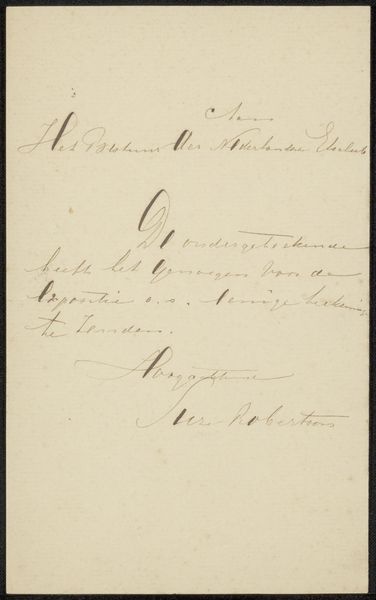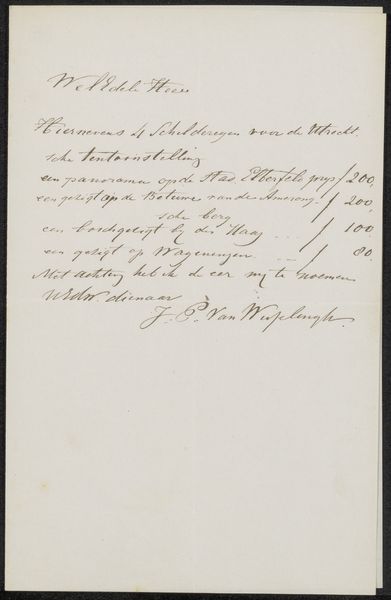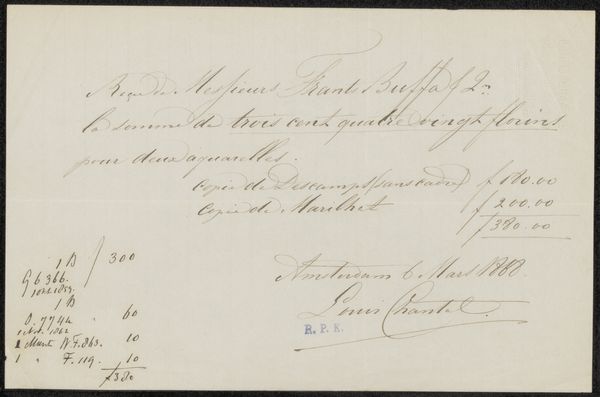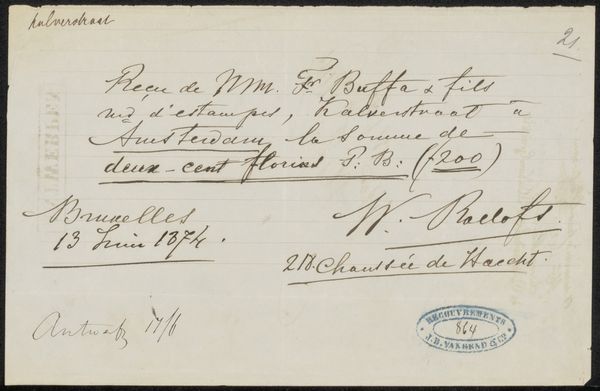
Copyright: Rijks Museum: Open Domain
Curator: Here we have "Kwitantie voor onbekend", a drawing that translates to "Receipt for Unknown," likely created between 1763 and 1767 by H.C. Lormier-Van Olden. It is rendered in pen and ink on paper. Editor: Immediately striking is its simplicity and intimacy, like a private note. The paper, though now aged, seems to cradle the hurried script of a transaction. It almost feels like spying on a historical moment, however mundane. Curator: The act of recording financial exchanges has always carried cultural weight, acting as both a practical record and a social marker of trade and wealth. It tells of obligations and their fulfillment, like a physical embodiment of trust. Editor: And trust is a crucial element to consider, given the era and means. Look at the materials themselves: pen, ink, and paper – relatively accessible tools. Yet, consider the labor— the craftsmanship evident in that practiced hand forming each letter. This isn't mass-produced. It is uniquely human, a tangible piece of social and economic exchange. Curator: Indeed, the handwritten nature transforms it beyond a mere document. The flourishing script itself seems almost performative, a signifier of status. One could even say it elevates utility to a level of artistic expression. It carries an aura, doesn't it? Editor: It does, but I am always grounded by materiality, though. It seems too focused on aesthetics. These financial details speak of a whole structure of credit and value, one created through complex networks and material exploitation. I find it hard to focus on aesthetic skill here while there are material stakes we have to confront. Curator: Even the unknowns are part of this larger story, hinting at histories and economies we can never fully access. And like every material, even this paper will eventually deteriorate, taking with it the history. Editor: Exactly. It all cycles back to matter: where it comes from, what work transforms it, and how it decomposes. Thinking that is fascinating and keeps the piece engaging and very, very present.
Comments
No comments
Be the first to comment and join the conversation on the ultimate creative platform.
